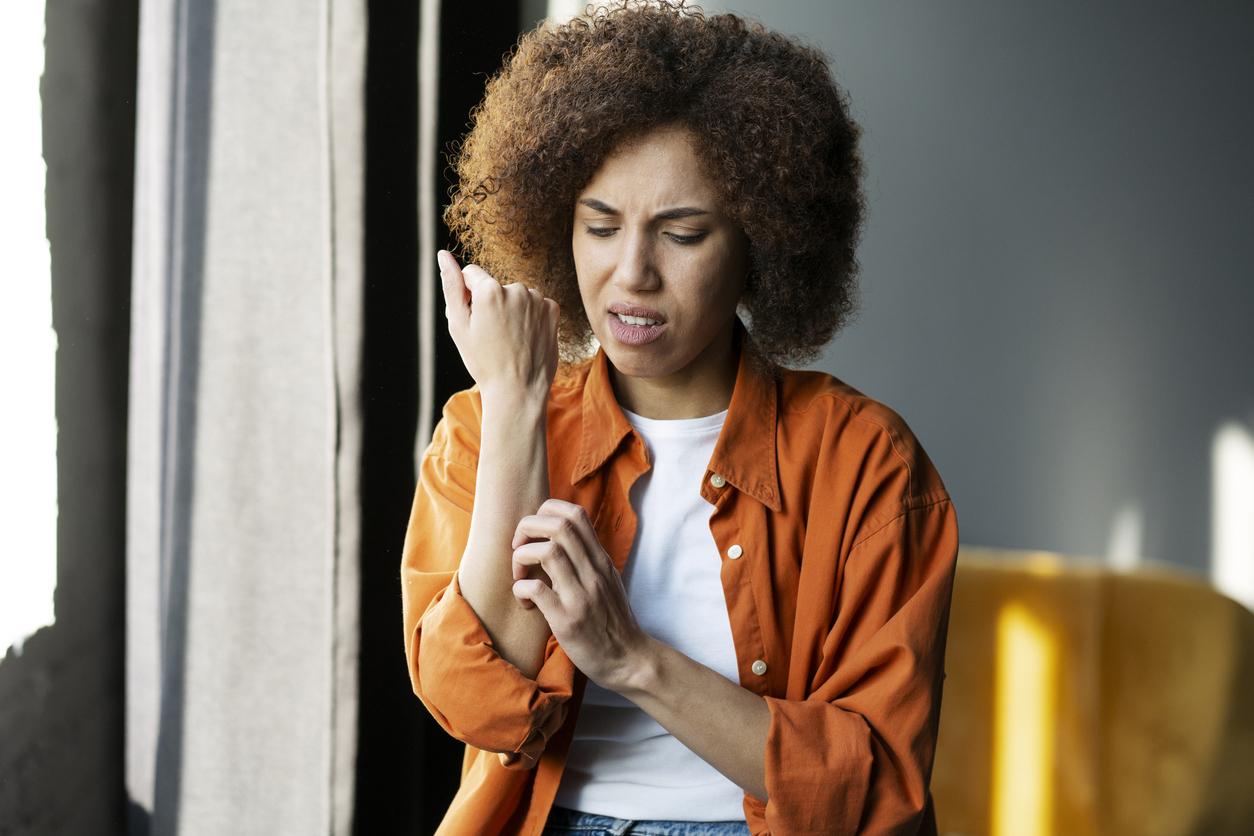In cold weather, the skin plays an essential role in barrier and thermoregulation. But, it also undergoes aggressions which induce dryness and sensitivity, as well as redness. The surface of the skin becomes fresher, and therefore more fragile: the microcirculation slows down and the protective hydrolipidic film decreases. It is therefore important to “nourish” her enough so that she remains well hydrated, flexible and therefore in good health. “When it’s very humid and very cold, fat is the best insulator for the skin,” explains Aurélie Guyoux, Scientific Director of the Etat Pur brand. But “beware of very heated interiors where the air is too dry. It is a major dehydration factor ”, continues Dr Braeken, dermatologist. To avoid all these inconveniences, we tell you how to take the lead and keep skin in good shape!
What are the most nourishing ingredients?
“These are mineral or natural oils (glycerin, Shea…), but also waxes such as cerates. These raw materials are contained in water-in-oil emulsions, that is to say in rather rich creams, ”explains the dermatologist. For Aurélie Guyoux, “it is the oils (olive, jojoba, soya …) and vegetable butters (shea and mango), rich in ceramides, sphyngolipids and fatty acids that must be avoided. As well as molecules such as D-Panthenol and vitamin B5, an active ingredient that is also very interesting, because it has an immediate barrier effect. It is magic for damaged hands, scabs and very dry areas. Vitamin PP is also important because it is a precursor to certain skin lipids. “
Is one body oil sufficient in winter?
“That may be enough. But it remains on the surface of the skin, where it prevents the evaporation of water. In addition, some leave a greasy film, which makes it difficult to get dressed quickly, ”adds the dermatologist. Certainly, milk (or cream) penetrates more into the epidermis. Corn, if you like oil and that your skin is dry or even very dry, “nothing prevents you from superimposing the latter and a good nourishing cream to have a dual beneficial effect: nutrition and hydration”, continues Aurélie Guyoux.
Do you have to change cream when it starts to get cold?
“From the age of 35, the skin changes and becomes more sensitive. It adapts less well to the cold. The drier or more humid air in winter, the wind and the heating alter its hydrolipidic film. We can therefore switch to a richer treatment as soon as it starts to get cold, ”approves the dermatologist. “Dry, normal and combination skin should favor slightly richer formulas. This is not necessarily the case for oily skin, ”explains Aurélie Guyoux.
What about make-up removers and cleansers?
“It’s a good idea to go for a gentler cleansing on the skin,” agrees the dermatologist. “And it’s much more cocooning for the skin to swap micellar water or cleansing foam, for a creamy milk or an oil, richer in lipids. Because if the barrier is altered, the skin becomes more sensitive. It is therefore better to choose simple products, not too fragrant to limit reactions, specifies Aurélie Guyoux. You can also exfoliate your skin, but really gently (with an oily scrub for example), and then nourish it by applying a hydrating mask or a layer of rich cream. “
Do you need to use more cream or use it more often?
On the face, no need to put more or more often, you just have to choose the one that suits your skin well at that time. “A night cream is essential when it is cold, because the skin regenerates at that time”, explains Aurélie Guyoux. On the body, depending on the dryness of your skin, choose a more or less rich milk or balm. You will apply it in the morning or evening after showering. And if necessary twice a day. On high-risk areas, such as the lips, apply a protective stickas often as needed. On the hands, it is at least twice a day.
My hands are rough and dehydrated, what should I do?
They are the first victims of the cold. Between the wind and the snow, the temperatures flirting with zero and the sometimes too hot heating, their skin is quickly attacked. Because, fine and fragile, it contains only a few sebaceous glands, which produces sebum, essential protective with the hydrolipidic film. For avoid dehydration and drying out, it is necessary:
-Wipe your hands well after washing them
-Wear gloves to insulate them from the cold and wind
-Apply at least twice a day a moisturizer, rich in vegetable oils and waxes.
-Continue this treatment until the skin is in better condition, or even until the end of winter.
Can my nails suffer from the cold too?
“Yes, nails and hair also suffer from the cold, even if they contain little water. I advise to regularly apply a cream or an oil and massage the nails with it. And you have to put on your gloves, not once you’re outside, but just before going out. It is also very beneficial to sleep with a thick layer of cream or very oily cerate on the hands and cotton gloves. And for the household, we absolutely put on protective gloves ”, recommends Dr Braeken, dermatologist.
Is a hot bath bad for my skin?
If it is dry or very dry, it is better to avoid soaking for too long in water, especially hot. “But you can compensate for its drying effects by pouring a capful of oil into the water, and avoiding staying there too long!” Use an ultra-rich soap enriched with lipidic agents. And when you come out when the skin is still a little damp, apply your moisturizer, it will penetrate even better, ”explains Aurélie Guyoux.
Are there anti-cold foods?
“Not really, but you can change your diet a bit to fill up on essential fatty acids (especially Omega 3) which are good for the skin and help to fix water in the body. By consuming rapeseed and soybean oil rather than olive oil. You can also increase your consumption of fatty fish (sardines, herring, salmon …), by putting them on the menu two to three times a week. And it is of course necessary to drink about 1.5 l of water per day, in the form of water but also of herbal tea, pleasant when it is cold, and of soup », Specifies the dermatologist.

















